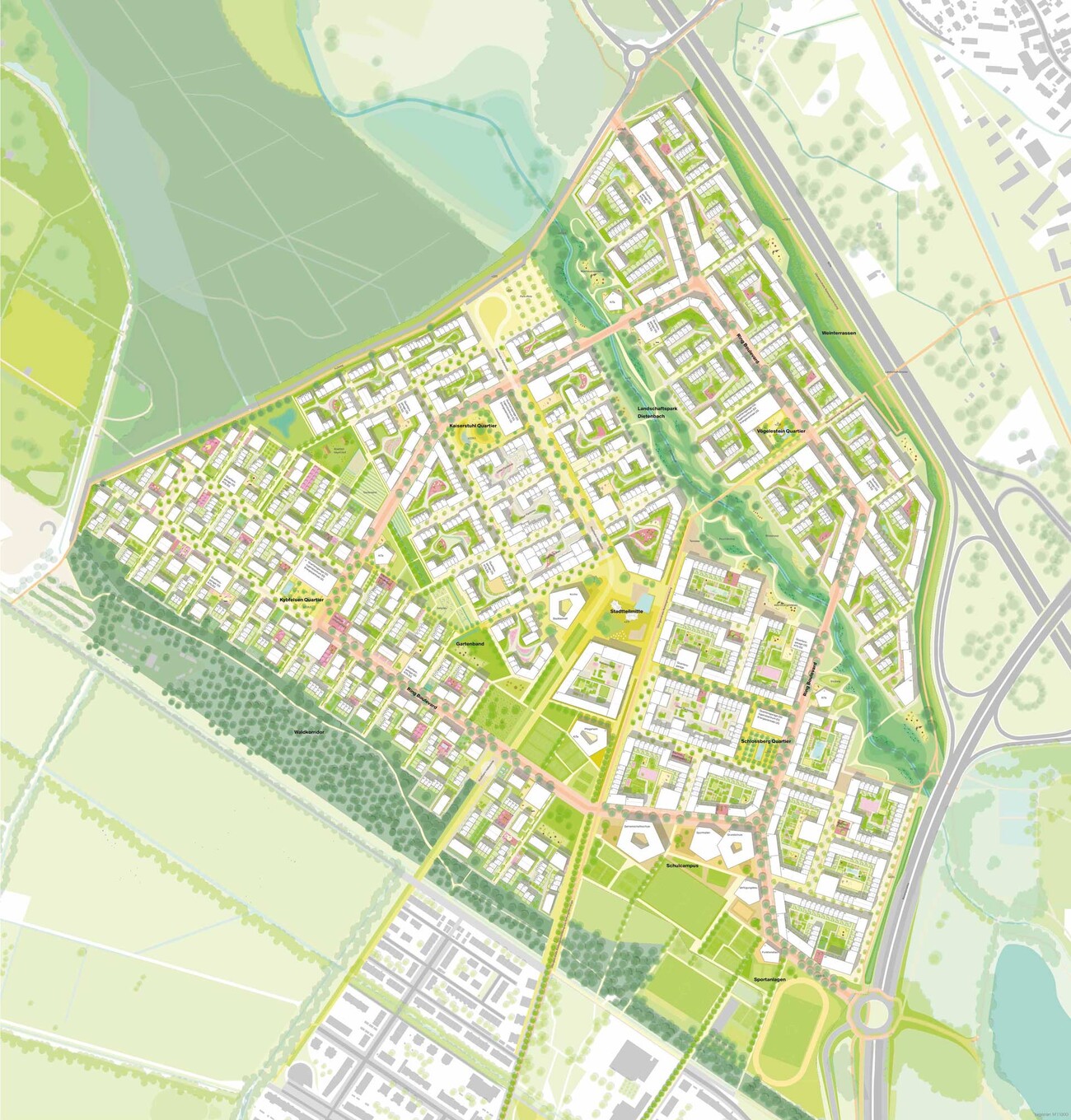Masterplan Dietenbach, Freiburg i.B., Germany

A developing urban surrounding increases building density and comes to a point where the issue inevitably raises how to use best the surfaces of roofs and façades. Then the planners have to decide which of the uses should be prefered: energy generation, greening or terraces? - Or they have look for ways that allow compromises.
The compromise developed for Dietenbach fortunately offers the prospect of all three types of use at the same time.
For the design of the masterplan, Transsolar took over the task of drawing up an energy concept that would enable the district with its approx. 6,500 apartments for 15,000 people to operate in a climate-neutral manner, i.e. with at least a balanced CO2 footprint. This also includes an estimated share of energy for e-mobility and more.
The energy concept is mainly based on local and regenerative resources using solar energy, both solar thermal and photovoltaic. The energy supply will me implemented in steps co-developed to the construction phases and provides for a central seasonal heat store with 16,250 m³ for each of the four sub-quarters. This will create a semi-central heating network for the new Dietenbach district, as in the final phase the elements will be connected to each other which will allow the exchange of synergies.
Several components are feeding together the seasonal heat storage system: solar thermal energy, a CHP for heat and electricity production operated with wood chips, a wood boiler for peak loads and a heat pump for each sector. Focus for the operation of the CHP unit is to generate as much electricity as possible.
The heat pump boosts the solar thermal system which runs on low-temperature level. Combinding solar thermal and heat pump extends its operating period in shoulder seasons or even into winter.
After completion, the annual electricity generation of the entire quarter will be in total around 17,600 MWh, by about 142,000 m² photovoltaics on the roofs and south-facing facades. In addition, 33,000 m² of the solar thermal system provides energy buffered in the seasonal heat storages. In each of the four district sections an energy centre will be well integrated into the landscape architecture in a socalled neighbourhood garage. And alos power storage units shall be integrated there. Each part of the quarter will get with this its own "energy heart". This approach to a synergetic and integral concept, combined with the optimised design of buildings and roofs, not only gives the neighbourhood way to run "CO2-negative", but also makes it green and worth to live in.





